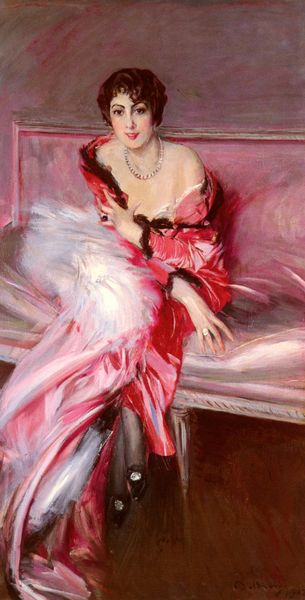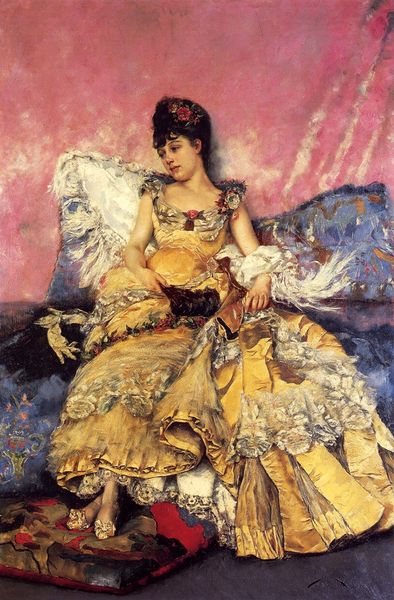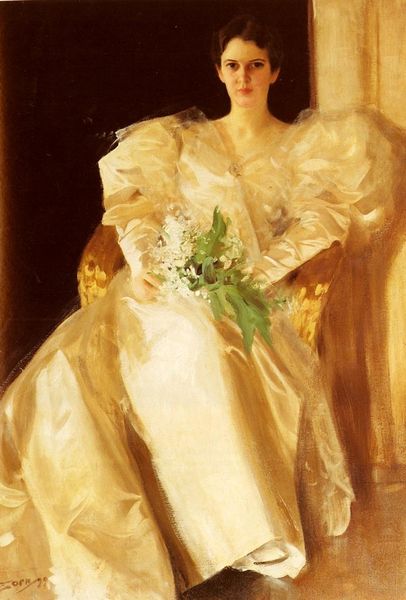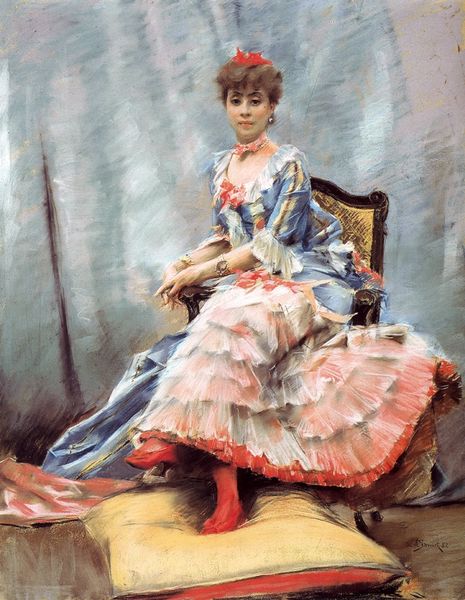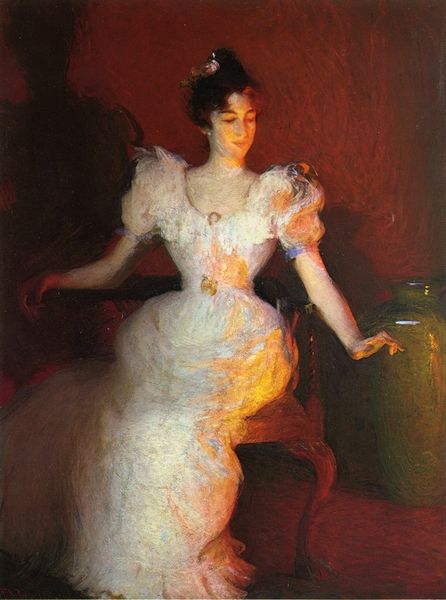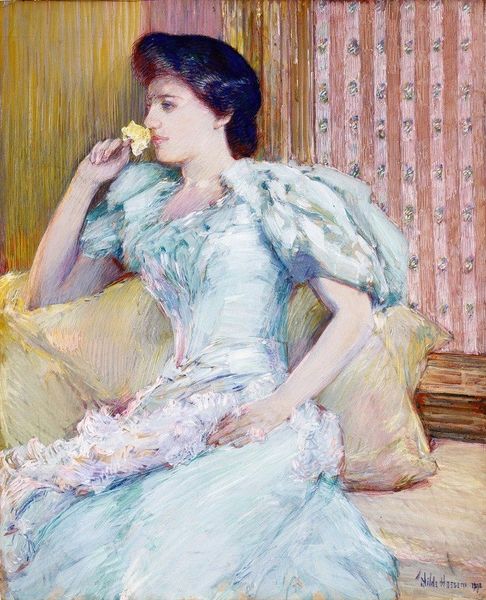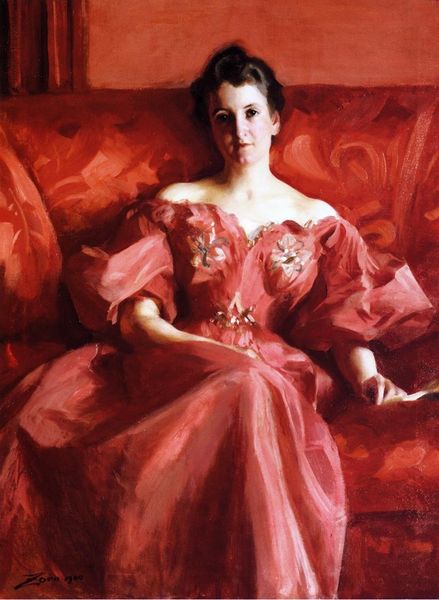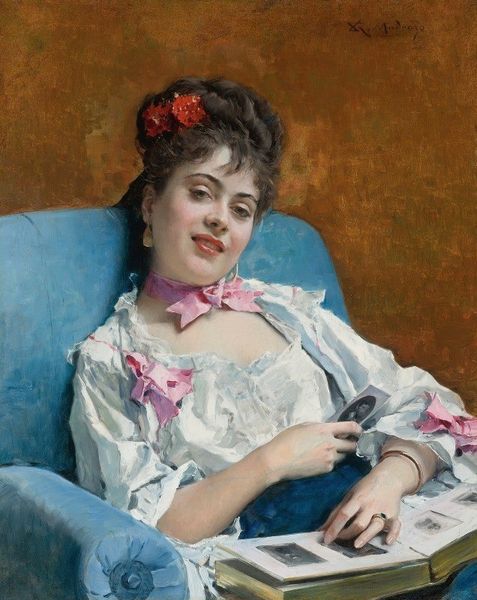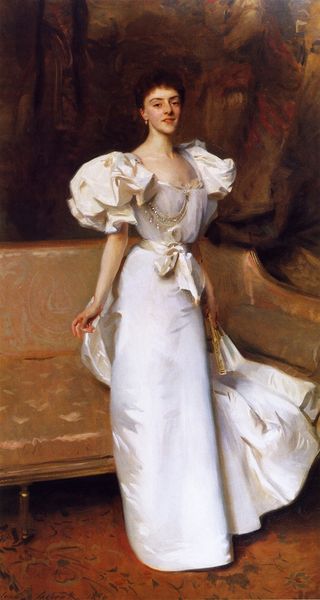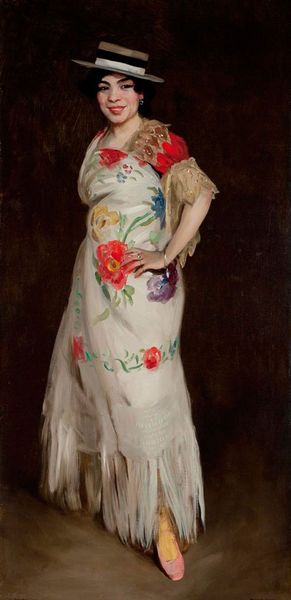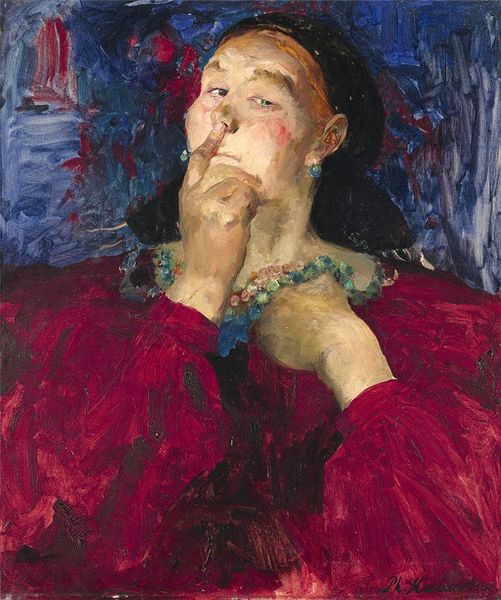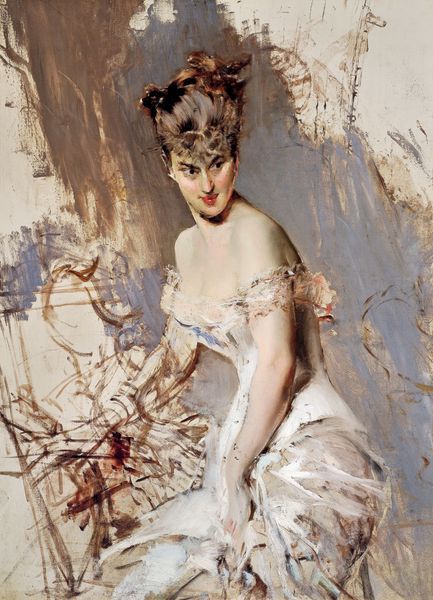
Copyright: Public domain
Anders Zorn’s portrait of Elizabeth Sherman Cameron captures a prominent figure of American society with an elegant and cosmopolitan sensibility. Made at the turn of the 20th century, this painting reflects the Gilded Age’s fascination with wealth and status. The choice of a Swedish artist to paint the portrait of an American socialite reveals the transnational networks of the elite. Cameron’s attire, pose, and surroundings display her wealth, and perhaps the painting was commissioned to reinforce her position within the social hierarchy. Consider the role of portraiture in shaping public perception and reinforcing social norms. The imagery of wealth and status are visual codes that historians can decode to understand the complex interplay of art, society, and power. By studying similar portraits and consulting historical records, we can gain a deeper understanding of the social conditions that shaped artistic production during this time. The meaning of art is always contingent on the social and institutional context in which it is created and consumed.
Comments
No comments
Be the first to comment and join the conversation on the ultimate creative platform.
